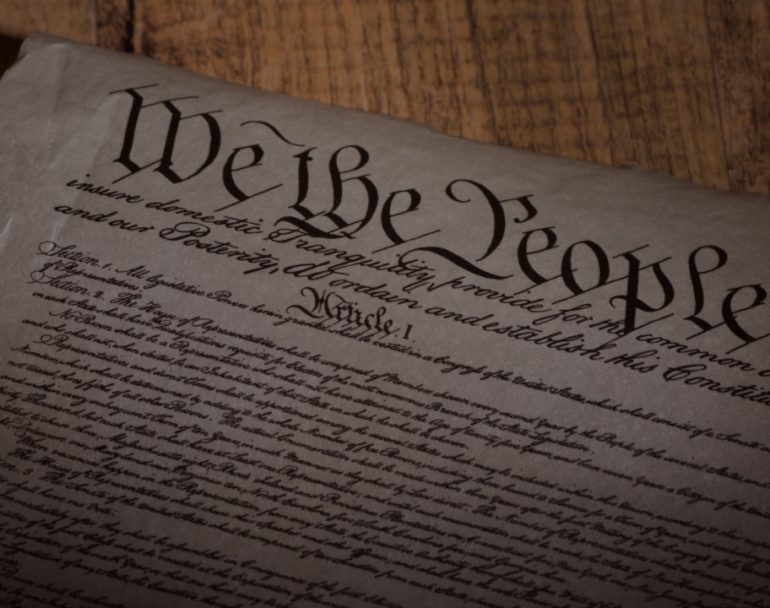
How our presidential election system works
By: Rob Natelson
When Americans go to the polls in November presidential elections, they don’t cast ballots for the president and vice president directly. They chose among slates of presidential electors pledged to different candidates.
These electors, in turn, vote the following month for president and vice president.
Each state has as many electors as senators and representatives in Congress. Thus, Pennsylvania’s 18 representatives and two senators entitle it to 20 electors; Wyoming’s single representative and two senators entitle it to three electors. In addition to electors from all the states, three electors are assigned to the District of Columbia, bringing the total to 538. The electors collectively form the Electoral College. (In this context, “college” means an organization, not an educational institution.)
The Constitution grants the electors their sole power and function: to assemble in their respective state capitals to cast ballots for president and vice president. After doing so, they disperse permanently. The entire group never meets in the same place.
To win a presidential or vice presidential election, a candidate must receive an absolute majority of electoral votes—currently 270.
Sometimes, although rarely, the electors split among multiple candidates, so no candidate wins an absolute majority. Consider this hypothetical election:
Candidate A — 200 votes
Candidate B — 180 votes
Candidate C — 88 votes
Candidate D — 70 votes
Total — 538 votes
Candidate A has won a 37 percent plurality—that is, he received more ballots than any other person. But no one has garnered an absolute majority (50 percent plus one). So the Constitution mandates a run-off election in the House of Representatives. The representatives choose among the top three candidates, voting by state delegation (one state/one vote). At least two-thirds of state delegations must be present, and election requires a majority of states (26 of 50).
Similarly, if no candidate for vice president garners an Electoral College majority, the Senate holds a run-off among the top two vote-getters. Two-thirds of all senators must participate, and election requires a majority of all senators (51 of 100).
The majority requirements in the Electoral College and in the run-off elections ensure that our top two officeholders enjoy broad national support.
The Constitution’s framers devoted much attention to how the president and vice president are chosen. They considered many methods—among them direct popular vote, election by Congress, and election by state governors.
Some writers claim the framers adopted an indirect election procedure because they didn’t trust democracy. This is an oversimplification. The framers balanced many factors:
• Enabling the president to make decisions independently of Congress or the states.
• Ensuring the president represents the nation as a whole rather than merely some sections.
• Ensuring that even if the president is not the most popular person in the country, he has enough support to govern.
• Ensuring that election is free from foreign dictates, mob behavior, and excessive influence from special interests.
• Ensuring participation by both national and state constituencies.
• Increasing the chances the president is competent to govern.
After being refined by the 12th amendment (1804), this procedure has worked well.
First, it ensures that the president has widespread public support. The popular vote leader wins more than 90 percent of the time, and usually garners an absolute majority. Since the election of 1864—the first time the people voted for electors in every state—even in multi-candidate elections, no successful candidate has received less than 41 percent of the popular vote.
The system also screens out primarily regional candidates, even when they win narrow popular vote pluralities. It frustrates foreign governments’ efforts to influence elections. It forestalls the mob behavior and special interest influence that might occur if electors met in one place. It also preserves the president’s independence from Congress and the states.
Only in one respect has the method of presidential election disappointed: Electors were supposed to be leaders in their respective states, exercising informed discretion. The idea was to ensure the election of competent presidents. However, most states have laws dictating how electors vote. This explains why electors are often mere party hacks and why some recent presidents haven’t been ideally equipped for the job.
Those state laws are probably unconstitutional, and are now under court challenge.
Currently, a group called National Popular Vote (NPV) is promoting a plan to alter the procedure. The group wants state legislatures to make a deal, whereby state voters would no longer choose their own electors. Instead, each state would award its electors to whoever receives a national popular vote plurality.
NPV would impose on the United States the bare plurality-winner method that prevails in Honduras, Mexico, Nicaragua, Panama, Paraguay, the Philippines, and Venezuela.
Experience in those counties shows that the NPV system often results in a candidate winning the presidency even though the overwhelming majority of voters oppose him. For example, in the May, 2019 presidential election in Panama the winner was “elected” with only 33 percent of the votes. The fact that many Americans have accepted NPV testifies to the need for better public education about the Constitution and the constitutional system.